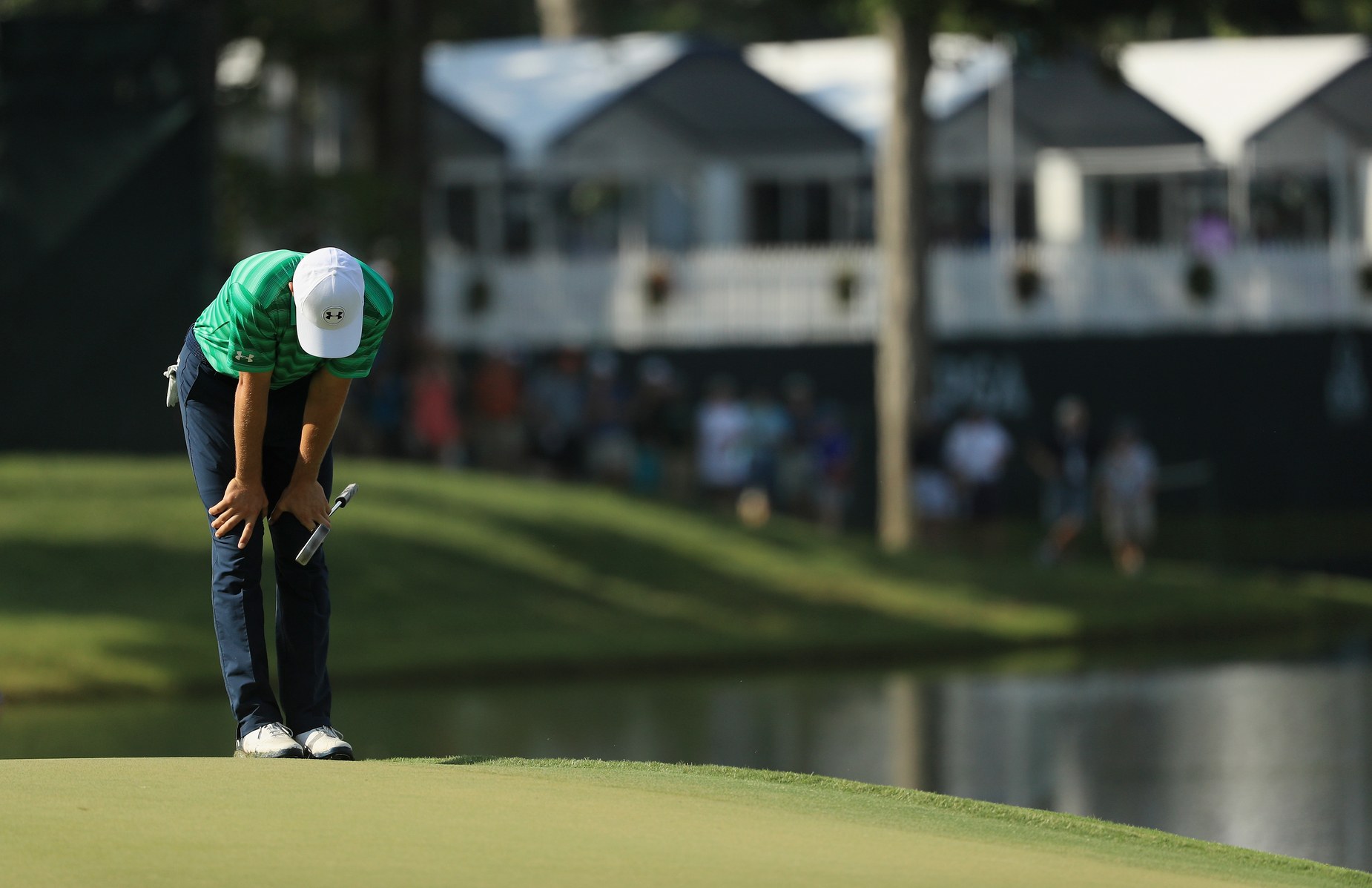By Jaime Diaz
What did we learn about the PGA Championship-iteration of Quail Hollow after Thursday’s first round?
First and foremost, very difficult. Despite a lot of rain. Despite the PGA generally being considered the easiest setup among the four majors. Despite a history of good scoring at the PGA Tour’s Wells Fargo Championship.
But to begin with, this isn’t the same course. Since a completion last summer of the club’s “Master Plan,” it’s got new playing surfaces. Champion Ultradwarf Bermudagrass has replaced bent grass on the greens, making them both firmer and faster, especially with SubAir systems sucking out any extra moisture. Although no official Stimpmeter reading has been announced, players estimated that the greens were rolling close to 14.
The original rye grass rough is now Bermuda, which is thicker and tougher to control the ball from, especially in the summer growing season. The bunker sand has also been changed out, with the same bright-white quartz-based sand used at the Masters. Indeed, under the leadership of President Johnny Harris, Quail Hollow has taken on Augusta-like aspects and ambitions.
There are also three new holes, each among the toughest on the course. Jim Furyk calls the 524-yard par-4 1st hole the toughest opener in golf, simply because he believes it should be a par 5. The shallow and extremely undulating green on the 184-yard fourth hole gave the players fits and elicited complaints, while the 449-yard fifth was more accepted but still contributed to a start that set many players back on their heels. On Thursday, those three holes played a combined 157 over par.
Then there is the part of the old course that was always hard – the final three holes, known as the The Green Mile. Water is prominent on the 504-yard par-4 16th, the 223-yard par-3 17th, and all along the left side of the 494-yard par-4 18th. Double bogey is a distinct possibility on all three.

Mike Ehrmann
The sum total of the above is why “defensive” has been the byword of the week when it comes to describing the overall challenge. “Yes, you need to be defensive on these greens,” said Jordan Spieth, arguably the world’s greatest putter, after a first round, one-over 72 in which he bemoaned not holing anything and thrice taking three from the edge. “You have to.”
At the moment, it’s looking like Phil Mickelson, who opened with 79, was close with his early call last year upon learning about the nature of the redo: “Can you imagine this golf course with severe rough, where you have to play very defensive?” he said. “I think over par would end up winning it.”
That’s U.S. Open type talk, and this year the PGA is more U.S. Open than the U.S. Open was at Erin Hills. Indeed, Quail Hollow could very well end up the year’s toughest scoring major, with the Masters’ winning total of nine-under par setting the bar. Earlier this week, Mickelson predicted that six under will win.
It’s a bit of a surprise, in a bucolic setting in the Carolina pines that has always been a player-friendly environment, both in the way Harris has made sure it’s one of the best in hospitality, and in immaculate conditions. Double-digit under par has been the rule since the Wells Fargo began in 2003, with the tournament record being 21-under 267.
That’s not going to happen, not with the new rough and green surfaces. Yes, the wet fairways will offer more effective width and less fear off the tee. U.S. Open champion Brooks Koepka, who took the teeth out of Erin Hills with long and accurate driving on wider than normal fairways, calls Quail Hollow a “bomber’s paradise.” After the first round, the legitimate bombers joining Koepka in the top 20 within three of the lead were world No. 1 Dustin Johnson, No. 2 Hideki Matsuyama, and No. 7 Jason Day, along with less-formidable names Grayson Murray, Gary Woodland and Tony Finau.
It looks like a bomber who expects to win at Quail Hollow will have to be relatively straight. The expected rain might help, but the punishing rough will produce a lot of missed greens and long approach putts. With the greens so treacherous, scrambling for par will be difficult, and three putts from distance will be common. Perhaps more than expected at Quail Hollow, the tried and true major championship formula of “fairways and greens” looks likes it will hold the edge over “bomb and gouge.”









